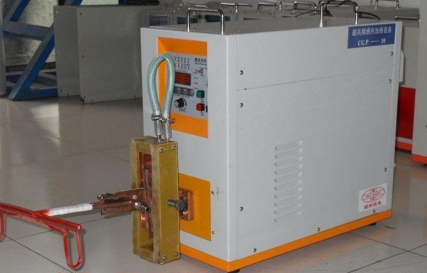- 11
- Oct
Bakit hindi matugunan ng isang set ng high-frequency hardening equipment ang mga kinakailangan ng ilang uri ng workpieces?
Why can’t a set of high-frequency na kagamitan na nagpapatigas meet the requirements of several kinds of workpieces?
For example, such quenching requirements:
1. Kategorya ng axle pin:
1. Ang workpiece ay hindi pumutok pagkatapos ng pagsusubo
2. Ang pagpapapangit ay hindi maaaring higit sa 0.2mm
3. Mabisang lalim ng pagsusubo sa ibabaw: 1-5mm
4. Ang tigas pagkatapos ng paggamot ay humigit-kumulang: 45-50mm
5. The main material is medium-carbon alloy pipe steel, the main material is 40Cr, 42CrMo, the hardness of the workpiece after treatment is about HRC: 45-5
6. Workpiece size: length 620-1476mm diameter: φ44-φ103mm
2. Mga gear
1. Lalim ng pagsusubo sa ibabaw: 0.8-0.9mm
2. Main material: 45#, 40Cr, 40CrNi, etc.
3. Surface hardness HRC after treatment: 48-53
4. Number of teeth: 26, 33, 55, 60 Diameter of index circle: φ52, φ66, φ110, φ120 Modulus: 2
3. Bearings
1. Lalim ng pagsusubo sa ibabaw: 0.5-1mm
2. Pangunahing materyal: Cr14Mo4V, G20Cr2Ni4A, atbp.
3. Surface hardness HRC after treatment: 61-63
4. Panlabas na diameter: φ50-φ120
The customer requires a set of high-frequency quenching equipment to meet the quenching requirements of the above three types of workpieces at the same time. This cannot be achieved, mainly because of the selection of the high-frequency induction heating power supply. Because: the surface hardening depth is 1-5mm, we will recommend to choose the super audio frequency induction heating power supply with a frequency of about 30KHZ, and the surface hardening depth 0.8-0.9mm should choose the 250KHZ high-frequency induction heating power supply, a high-frequency induction heating power supply cannot To achieve two frequencies, so it can not meet all the quenching requirements, two high-frequency quenching equipment is needed to solve such quenching process requirements, which exceeds the customer’s original budget, so this is also the limitation of high-frequency induction hardening. In addition, high-frequency induction hardening is not suitable for workpieces with complex shapes, such as certain transmission gears. It requires extremely high wear resistance and tough cores. At present, nitriding technology is still used. Therefore, high-frequency induction hardening is only suitable for mass production of one or one family of workpieces.

